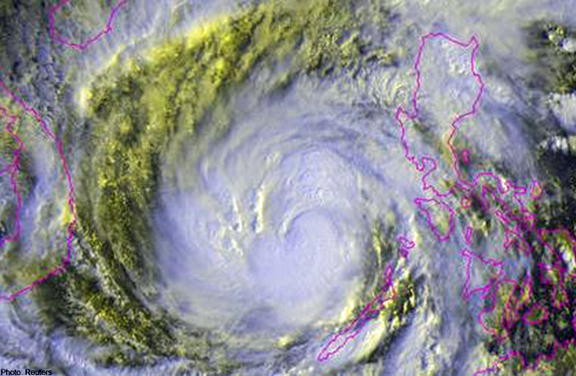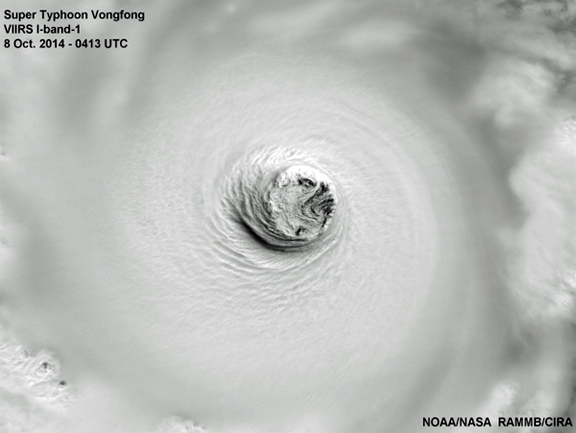
This NOAA satellite image shows the Category 5 super typhoon Haiyan that ripped through the Philippines in November of 2014—nearly 8,000 people wee left dead or missing.
Image courtesy of NOAA.
[SatNews] A super typhoon on course to hit Japan over the weekend is as powerful as the deadly storm that ripped through the Philippines last year, killing thousands of people, meteorologists said.
The monstrous storm, named Vongfong, was picking up speed as it churned through the far west of the Pacific Ocean yesterday. It comes at a time when the East Asian nation is recovering from another typhoon that whipped through it just days ago, leaving 11 people dead or missing and causing travel chaos.
"Its strength is very much similar to Haiyan," said a meteorologist at the Japan Meteorological Agency.
Super Typhoon Haiyan left nearly 8,000 people dead or missing when gusts of around 300kmh tore through the Philippines in November, generating giant waves that swamped coastal communities. Vongfong was registering gusts of the same strength, according to the Japanese agency. Satellite images of Super Typhoon Vongfong show a perfectly formed eye in the middle of a gigantic swirling disc of cloud that appears to be sucking up weather systems from across the tropics. Its present course will see it smash into Japan some time over the weekend, just days after Typhoon Phanfone hit the country on Monday.

Close up of Super Typhoon #Vongfong's eye via @NASANPP VIIRS. October 8, 2014, at 12:13 am EDT.
(Image from RAMMB/CIRA)
This most intense storm of 2014 is currently moving at around 11 kilometers an hour towards the Japanese Island of Okinawa—around 1000km south of Tokyo—which is home to three quarters of the US military bases in Japan. Fifteen meter waves and wind gusts as high as 330 kilometers an hour are predicted as super typhoon Vongfong barrels across the Pacific Ocean. Satellite images show the eye of the storm measures 42 kilometres round
Source: asiaone

